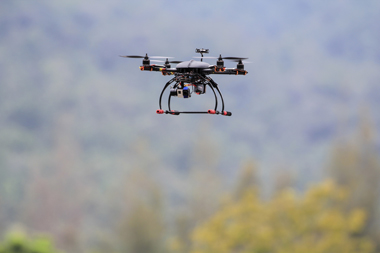 PrecisionAg, an
online publication devoted to reporting on the latest agricultural
technologies, recently published a three-part series titled “Three
Agricultural Spray Drone Models That Promise to Be Breakthroughs.” NAAA
felt compelled to respond to the article series to set some facts straight
about the capabilities of manned aerial applicators.
PrecisionAg, an
online publication devoted to reporting on the latest agricultural
technologies, recently published a three-part series titled “Three
Agricultural Spray Drone Models That Promise to Be Breakthroughs.” NAAA
felt compelled to respond to the article series to set some facts straight
about the capabilities of manned aerial applicators.
Several quotes in the article cast doubt on the precision
and efficacy of manned aerial application methods and questioned the safety of
the industry. Individuals interviewed also branded technologies on their UAV
products as “unique” when the same technologies have been available on manned
aircraft for multiple years. The claim was also made that aerial applicators
cannot operate at night because it is too dark. In an op-ed
sent to PrecisionAg NAAA debunked
these and other myths.
One of the most often repeated claims about UAVs and aerial
application is that UAVs create less unintentional drift. NAAA explained why
that claim not only cannot be verified, but also may be incorrect writing in
part:
“… thanks to extensive research
done by the USDA’s Aerial Application Technology Research Unit and the EPA, manned
aircraft have sophisticated spray nozzle models showing how products applied
aerially are dispersed based on aircraft size, aircraft speed, wake vortices,
windspeed, temperature, boom length, droplet size and many other factors.
However, these models only apply to traditional manned aircraft that are either
single-rotor helicopters or single prop airplanes moving at high speeds. The
models are not applicable to multi-rotor drones moving much slower and weighing
much less. New spray models applicable to unmanned aircraft with two, three,
four or even eight rotors need to be developed before anyone can confidently
state the efficaciousness of UAVs.”
Additionally, NAAA explained the downwash effect is greater
with manned aircraft because manned aircraft are generally larger than UAVs,
causing more air to be displaced moving the applied products deep into crop
canopy for excellent coverage.
The article makes clear NAAA views UAVs as a complementary
tool to manned aerial application methods, not a wholesale replacement. NAAA
welcomes the use of UAVs in agriculture and other industries, but also wants to
see them meet the high standard already applied to manned aerial applicators.
Additionally, NAAA believes these aircraft must be equipped with certain safety
equipment to ensure they do not collide with manned aircraft. Under the right
conditions NAAA believes UAVs can be a valuable tool for growers, not just with
aerial application but with aerial imaging as well.
The full op-ed here.